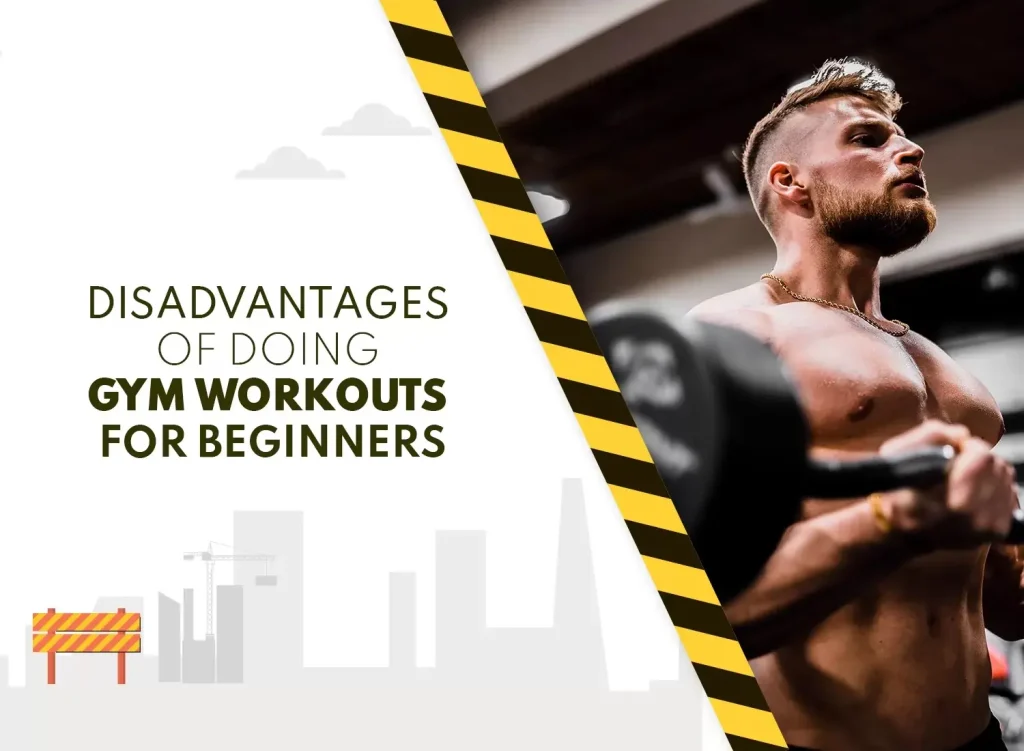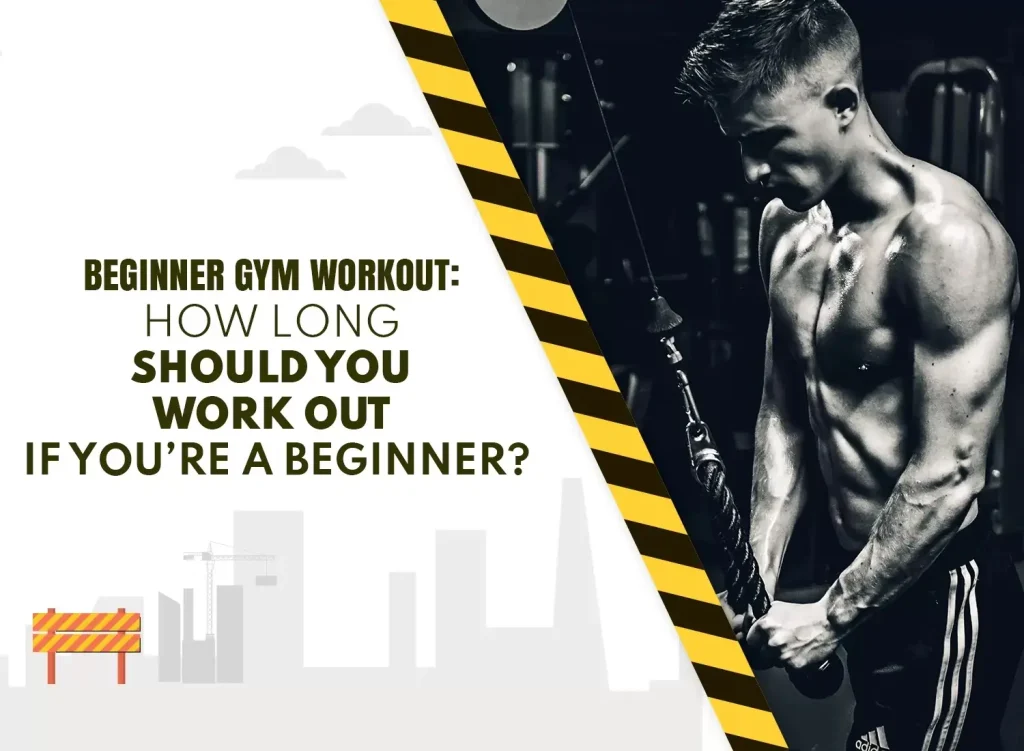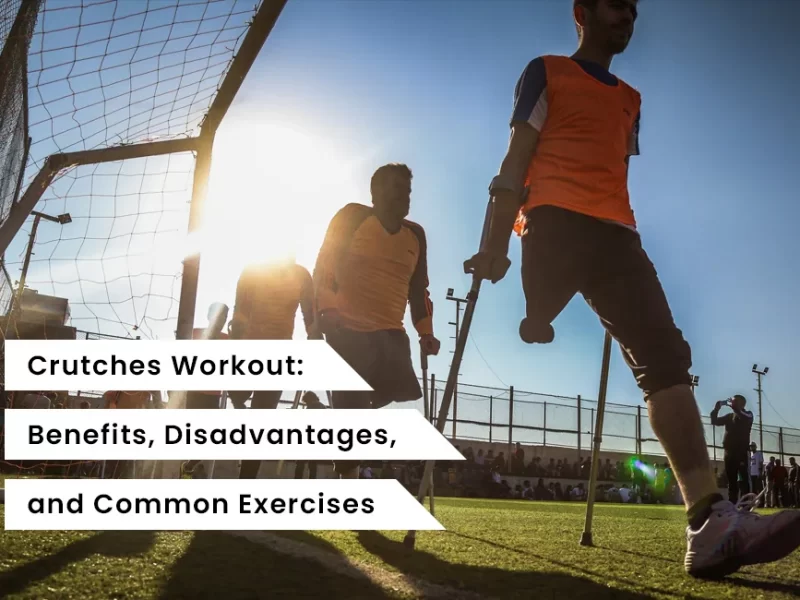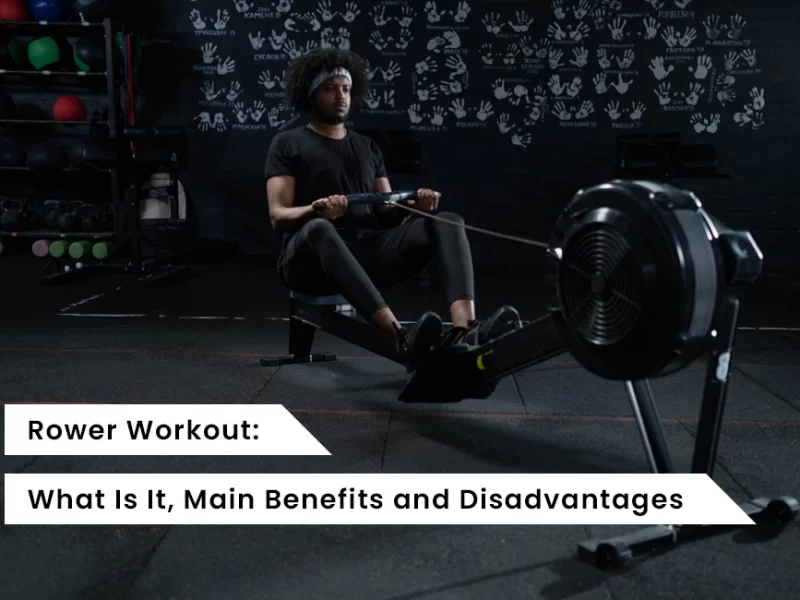This is a beginner gym workout routine that will focus on the major muscle groups of your body. You will be focusing on 3 major exercises, each with a series of different variations. This article will help you get into shape and have a healthy lifestyle. It will also give you the motivation to continue this healthy routine.
Why is doing a beginner gym workout important?
One of the most important things that beginner gym-goers can do to maximize their workout is to do a beginner gym workout. A beginner gym workout is a great way for beginners to get acquainted with the equipment, learn how to use it, and gain confidence in themselves.
A beginner gym workout is important for many reasons. It can be a way to ease into exercise, or it can be a way to get back into the swing of things after taking a break. A beginner gym workout can also help you learn new moves and build your confidence.
Here are some reasons why it’s important to do a beginner gym workout:
- It’s good for easing into exercise
- It’s good for getting back into the swing of things after taking a break
- It helps you learn new moves and build your confidence
- It helps you get stronger and leaner
What are the benefits of doing a beginner gym workout?
It’s always a good idea to remind yourself about all the amazing things beginner gym workout can do for you, both physically and mentally. Not only is it motivating to remember why it’s so important, but it also helps shore up the commitment you need to get up every day and move your body.
The wonderful thing about beginner gym workout is that you don’t need much to get the benefits. Even just a few minutes a day can improve your health and well-being. Here are just some things exercise can help you do:
- Boost your mood
- Give you more energy
- Help you sleep better
- Increase bone density
- Improve your confidence
- Improve your quality of life
- Lose weight
- Reduce stress
- Reduce your risk of heart disease and certain types of cancer
- Relieve symptoms of depression and anxiety
- Strengthen the heart and lungs
Just think about it. Exercise is the one thing you can do every day that you’ll always feel good about. Even if it’s just a 5-minute walk, you’ll improve your health and do something good for your body and mind.
See also A Beginner’s Guide to Interval Running for All Levels
Disadvantages of doing gym workouts for beginners
You have to leave the house
For some people, knowing they’ll have to get in the car and drive to the gym is a big un-motivator. If that’s you, at-home workouts may be a much better option. Most gyms charge extra for childcare, so that may be a consideration — and if you have to work around kids’ nap times, that can make it even more difficult.
Awkwardness
We all know that the gym is a place people go to do some self-improvement, and they all had to start as beginners. But sometimes knowing this in our head doesn’t help how we feel, and that can make the gym an intimidating place for body insecurities or feeling awkward trying to figure out how to work the equipment.
Money
Depending on your budget, gym membership fees can be a hardship. Working out at home costs nothing. Even if you invest in at-home workout equipment, this can be done a little at a time as money is available. If you’ve got an exercise mat and a few dumbbells, you have a lot of options for home workout routines, like this one.
Too much peopling
If you’re an introvert, or just someone who needs a little time to yourself after a day at work or with the kids, it can be draining being around so many people. You can try to create your own little world within the gym by popping in headphones, but if you’re still distracted or overwhelmed, home workouts might be a better option. Then again, for some folks, being surrounded by other folks working out can be energizing.
Getting muscle and body pain after gym
Gym is very important to all; however, after going to the gym for the first few days, you will feel muscles and body pain. Most people get discouraged with the pain they undergo after going to the gym.
Fear of body imbalance
Most serious gym- goers and bodybuilders have an imbalanced body proportion. That is, a bigger upper body and smaller lower body, the so-called toothpick shape. However, this happens due to improper body workout, only focusing on the upper body workout rather than the all body muscles workout. This becomes a disadvantage at the gym. The best thing to do to avoid body imbalance is by having a realistic workout routine.
Gym withdrawal symptoms
Point to note is that you can develop withdrawal symptoms when you quit gym for some periods. You may feel anxious, restless, guilt, tension, discomfort and depression.
Furthermore, failing to go to gym for a while can lead to loss of appetite, sleeplessness, and headaches.
Common types of exercise for Beginners (Gym Workouts)
There are various types of exercise, including:
Aerobic
The core of any fitness program should include some form of continuous movement. Examples include swimming, running, and dancing.
Strength
These exercises help increase muscle power and strength. Examples include resistance training, plyometrics, weightlifting, and sprinting.
Calisthenics
These moves are usually performed without gym equipment using large muscle groups. They’re done at a medium aerobic pace. Examples include lunges, situps, pushups, and pullups.
High-intensity interval training (HIIT)
This type of exercise includes repetitions of short bursts of high-intensity exercise followed by low-intensity exercises or rest periods.
Boot camps
These are timed-based, high-intensity circuits that combine aerobic and resistance exercises.
Balance or stability
These exercises are designed to strengthen muscles and improve body coordination. Examples include Pilates, tai chi poses, and core-strengthening exercises.
Flexibility
These types of exercises help muscle recovery, maintain range of motion, and prevent injuries. Examples include yoga or individual muscle-stretch movements.
The activities above can be done individually or combined. The important thing is to do what works best for you and to have fun with it.
Beginner Gym Workout: How long should you work out if you’re a beginner?
As it can be challenging to do the demanding exercises from day 1, newbies need to be patient and build their stamina gradually. Don’t be hesitant to consult with your trainer and request more detailed instructions. This way, you’ll know what is expected from you and how you can achieve your goals safely and efficiently.
Here are some of the workouts that are perfect for your first day at the gym:
A good warm-up routine is crucial so that you prepare your body to withstand the strain of workout and prevent injuries. Start by warming up your neck by rolling your head in half circles. Then, proceed to warm up your joints and stretch your quads and hamstrings.
Give the cardio workout a go. This is a great way to sweat out all the toxins, but make sure not to push yourself too hard the first time you step on a treadmill. Instead, spend 10 to 15 minutes walking before you start speeding up slowly.
Introducing some bodyweight exercises. When building your bodyweight exercising routine, it is best to consult with your trainer. They will help you create a plan that employs all muscle groups and equally targets your lower body, core, and upper body.
Once you feel comfortable enough, you can start lifting weights (dumbbells, kettlebells, barbells). Just be careful not to start with too heavy ones. It is great if you want to challenge yourself, just don’t overdo it and end up in bed for a week because of strained muscles.
Beginner gym workout tips
Stay hydrated
Drinking fluids throughout the day is essential for maintaining healthy hydration levels. Replenishing fluids during exercise is essential for maintaining optimal performance, especially when exercising in hot temperatures. Moreover, hydrating after your workout can help you recover and get you ready for your next training session.
Optimize your nutrition
Be sure to consume a balanced diet to support your fitness program. All food groups are necessary to sustain healthy energy levels and get the most out of your workout. Carbs are vital, as they can fuel your muscles before exercise. Carbs are also important after exercise to replenish glycogen stores and assist with the absorption of amino acids into your muscles during recovery.
Additionally, protein helps improve muscle recovery after exercise, repairs tissue damage, and builds muscle mass.
Lastly, regularly consuming healthy fats has been shown to help burn body fat and preserve muscle fuel during workouts, making your energy last longer.
Warm up
It’s important to warm up before your workout. Doing so can help prevent injuries and improve your athletic performance. It can also help improve your flexibility and reduce soreness after your workout. Simply start your workout with some aerobic exercises like arm swings, leg kicks, and walking lunges.
Alternatively, you can warm up by doing easy movements of the exercise you’re planning to do. For example, walk before you run.
Cool down
Cooling down is also important because it helps your body return to its normal state. Taking a couple of minutes to cool down can help restore normal breathing patterns and even reduce the chance of muscle soreness. Some cool-down ideas include light walking after aerobic exercise or stretching after resistance training.
Listen to your body
If you’re not used to working out every day, be mindful of your limits. If you feel pain or discomfort while exercising, stop and rest before continuing. Pushing through the pain is not a good idea, as it can cause injuries.
Also, remember that working out harder and faster is not necessarily better.
Taking your time to progress through your fitness program can help you maintain your routine in the long term and make the most of it.
Watch what you eat
What you eat before and after exercise can help with performance and recovery. It’s also important to match your workout needs with the right diet. Although you will not have to eat any special foods, your instructor may ask you to adopt some changes, like increasing your protein intake if you’re training to gain muscle. If you’re working out to lose fat, it will be best to consult your fitness instructor before following any meal plans.
Don’t do too much too soon
It is common for beginner exercisers to start running before implementing a walking program or lift heavier weights versus starting with lighter weights. Keep in mind that it’s important not to do too much too soon since it increases the risk of injury and can harm exercise adherence. Try not to rush the process. Remember, strength and performance builds over time.
Know your limits & pay attention
When you start an exercise program, know your limits physically, and stay aware of past injuries you need to be mindful of. Also, pay attention while performing each exercise of the program. It is essential to listen to your body for any indication you might be pushing yourself too much. For example, make sure you can still speak at least 3-5 words per breath while doing cardiovascular exercise, and stop immediately if you feel pain or if you experience any of the warning signs of exercises (dizziness or lightheadedness, chest pain, nausea, trouble breathing, etc.)
Find enjoyment
Starting something new can be challenging, and starting something new is more difficult if you don’t find enjoyment in the process. There are a few recommended strategies to help increase enjoyment while starting an exercise program. First, pick a cardiovascular low to moderate exercise type that you enjoy. For example, do you love to dance? Consider a beginner dance class in place of a walking or biking routine. Secondly, focus on enjoying the process instead of focusing on the end destination. Lastly and most importantly, notice how good it feels to move your body more regularly.
Don’t forget to rest and recover
Whenever exercise is part of a weekly routine, whether you are a beginner or not; it is essential to remember that rest is just as important as the training itself. Ensure that you incorporate the right balance between active days and rest days. Also, consider performing gentle stretching on your rest days if you are sore from the new routine.
Take your job into consideration
It is possible to stay fit even on a busy schedule. Finding time to weave some exercise into your schedule may seem like a challenge, but it comes down to such simple things as standing and stretching whenever you’re taking a break. You can also shop around for small workout equipment that you can have at your desk to use whenever you can. Being busy should never keep you from starting or keeping up with an exercise routine.
A little soreness after working out is normal, especially if you’re a beginner. It happens because your muscle fibers have to break down during exercise and repair themselves thereafter, which is the process that makes them larger and stronger.
Beginner Gym Workout: Workout routine for beginners
Goblet squat
This terrific exercise not only works all the major muscle groups in the lower body, but also helps you to develop good form that will carry through to barbell squats if you progress that far. Hold a weight like a kettlebell or dumbbell against your chest with your hands up and elbows pointing down, then drop into a squat until your thighs are at least parallel to the ground. Then drive back up.
Glute bridge
This bodyweight exercise is a great way for beginners to activate their glutes (the surprisingly massive muscles in your backside). Lie on your back with your knees bent and feet flat on the floor. Squeeze your glutes and raise your hips so your body forms a straight line from your knees to your shoulders. Pause for a beat and squeeze the glutes again, then lower back to the start.
Dead bug
Lie on your back with your arms extended towards the ceiling and your legs raised with knees bent at 90°. Lower your right arm behind your head and your left leg until both limbs are straight and hovering just above the floor. Then raise them again and do the same with the opposite limbs. Do ten reps on each side for a total of 20.
Incline press-up
If you’re feeling confident you can go straight into a full press-up, but a good option for beginners is to start your hands on an elevated surface like a bench. From there perform a press-up as normal, lowering your chest towards your hands, then pushing back up.
Standing biceps curl
The classic biceps builder. Stand holding a dumbbell in each hand by your sides with your palms facing forwards. Curl the weights up towards your shoulders, keeping your elbows by your sides, then lower them slowly. Make sure to swap between biceps exercises and triceps exercises, such as kick-backs and dips, in different sessions.
Suggestion: Build your arms with Arm Toning Workout: What Is It, Main Benefits and Risks
Barbell hip bridge
Sit on the floor with a bench behind you and a weighted barbell over your legs (the amount of weight you go for should be informed by your goal and capability). Roll the bar so that it’s directly over your hips and lean back so that your shoulder blades rest on the bench. Drive through the heels of your feet, pushing up your hips (shoulders and feet supporting you). Squeezing your glutes, extend as high as possible. Hold for 5 secs then slowly lower. Do 20 reps.
Renegade row
With a dumbbell in each hand, start in a high plank position, keeping your pelvis as stable as possible and hips lifted. Row your right arm back without twisting your shoulders, keeping your elbows tucked in to engage your lats. End with your wrist by your hip, then lower the dumbbell back to the floor. Repeat on the other side, then do a press-up. That’s one rep. Do 10 reps total.
Romanian deadlift
Hold a barbell in your hands, keep your knees slightly bent, your back straight and your core engaged. Hinge forwards at the hips, keeping your upper back and arms straight so the barbell lowers directly in front of your legs. Hold for 3 secs then return to the starting position by squeezing your glutes and pushing your hips forward (remember to keep your back straight). Do 10 reps per leg.
Floor dumbbell Russian twist
Sit on the floor with your ankles together. Hold a dumbbell at each end with both hands. Twist your arms to one side so that your torso follows but your back stays straight, clasping the dumbbell firmly. Twist as far as you can so that the dumbbell is nearly touching the floor. Engage your core and twist back through the center and over to the other side. Do 10 reps.
Summary and Conclusion
The Beginner Gym Workout is a short, intense workout that can be done at home, in the gym, or outdoors. It is a great workout for beginners and those who are looking to get back into shape.
The Beginner Gym Workout includes exercises that focus on the muscles in your upper body, lower body, and core. The exercises include push-ups, squats, lunges and planks. The beginner gym workout is designed to be done in 10 minutes or less.
This workout is a great way to get started with strength training. It will help you improve your strength, endurance, and mobility as well as tone up all over.
It’s also important to note that this workout is not designed for people who are already in shape or have been regularly working out for a long time. This workout is designed for beginners and those who are just starting out with fitness.
We hope you have found this article useful and informative. If you are interested in learning more about this topic, please check out our other articles on our site.
See also Crutches Workout: Benefits, Disadvantages, and Common Exercises





